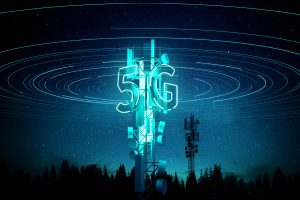A Recap of 5G Technology – Did it Deliver?
5G technology became ‘the next big thing’ in the last couple of years, but did it deliver on the experts and public’s expectations? As 2023 comes to a close, in the fast-paced realm of technology, let’s look back at what enhancements 5G was touted to bring and what strides took place.
- Hyperconnectivity and Low Latency
One of the most notable benefits of 5G technology has been the substantial reduction in latency. The major carriers have worked tirelessly to minimize the delay in data transmission, reaching unprecedented levels in near real-time communication. This development is a game changer for industries that require instantaneous decision-making, such as healthcare, finance, and manufacturing.
- Expanded Coverage, Network Reliability
AT&T Stadium, home of the Dallas Cowboys, has deployed 5G to enhance the fan experience during games and its 30 other high-capacity events throughout the year, including massive sellout events such as concerts by George Strait, the Rolling Stones and Taylor Swift.
With its recently upgraded 5G network, AT&T Stadium provides faster coverage for more devices and enhanced fan experiences, including the augmented reality (AR)-enabled “Pose with the Pros,” where fans can take photo of themselves with their favorite Cowboys players and Starview, which helps fans view live gameday stats, overlaid directly onto the field via their smartphones.
T-Mobile has partnered with Prisms VR to bring virtual reality headsets into classrooms. By deploying learning programs through Meta Quest 2 VR headsets, connected to T-Mobile’s 5G network, teachers and students can utilize interactive math and science lessons, bringing a new paradigm to traditional education while also helping to close the opportunity gap in science, technology, engineering, and mathematics (STEM) among students.
- Carrier Collaboration for Interoperability, Private 5G Network and FWA
Recognizing the importance of interoperability, major carriers have come together to establish standards that facilitate the smooth functioning of 5G across different networks. The collaboration ensures that your devices can seamlessly transition between carriers, enhancing flexibility and reducing dependency on a single service provider.
- Private 5G networks emerged as a big topic of conversation in 2023 and are widely preferred across various industry verticals, including manufacturing, energy and utilities, transportation and logistics, aerospace and defense, oil and gas, mining, and government and public safety.
- 5G FWA is becoming a mainstream service on 5G networks and a key home broadband access mode. Featuring fast deployment, excellent user experience, and low investment, FWA is growing faster than other home broadband paradigms in many countries and has become the best way for operators to rapidly expand their user base, accelerate business success, and fulfill the social responsibility of providing universal home broadband coverage. While there are still areas not served by 5G FWA, expect continued efforts to bring 5G FWA to more places.
- Integration of AI and Edge Computing
The synergy between 5G and emerging technologies like Artificial Intelligence (AI) and Edge Computing has come under focus in 2023. The high-speed, low-latency nature of 5G enables the rapid exchange of data, facilitating the deployment of AI algorithms at the edge of the network. This integration empowers businesses with faster decision-making, improved efficiency, and the ability to process data closer to the source.
Real-world examples of AI-powered network management solutions abound. Major telecommunications providers like AT&T and Verizon have integrated AI into their network operations. AT&T, for instance, employs AI to predict equipment failures before they impact service and to optimize network traffic in real time. Verizon uses AI to enhance its network security, identifying and mitigating potential threats swiftly.
These real-world implementations of AI-driven network management illustrate the technology’s transformative potential and its tangible benefits in terms of network efficiency, reliability, and security. As 5G networks continue to proliferate, the role of AI in their management and optimization will only become more pronounced, underlining the symbiotic relationship between these two groundbreaking technologies.

- Smart Cities and IoT Revolution With 5G acting as the backbone of these interconnected ecosystems, cities can become more efficient, sustainable, and technologically advanced. Envision the possibilities of managing a fleet of smart devices seamlessly integrated into your business processes. But where are cities in this revolution and their roadmaps to turn their cities into smart cities? While there are cities that are working on long range plans in this area, the pandemic caused a delay in some of this progress. The goal to build smart cities is still underway, but a shift in public trust and outlook on sharing of data, privacy concerns along with budget constraints have pushed these initiatives out a few years.
Public Adoption and Beyond It seems everyone was talking about 5G in 2023, with the promise of faster speeds and improved connectivity but many analysts argue that the 5G roll-out was somewhat dismal and overly hyped. With what seemed to be a high demand for 5G devices, manufacturers for the most part, weighted 5G public adoption into their plans of producing more 5G in their product lines. While there have been many deployments of 5G in enterprises, for the most part, it has not yet been fully realized.
1G to 2G created the transformation from analog to digital voice communications, 2G to 3G moved up to digital voice and digital data. 3G to 4G increased the bandwidth or widened the pipe for streaming services, virtual reality and high bandwidth applications. But with the 4G to 5G transformation, many analysts have noted 5G phones have not offered much more than what 4G phones already deliver.
So what is next for 5G? With the continued deployment of 5G capabilities, we expect to see the number of successful use cases to increase in the coming years. FWA has been the first home run while 5G Fixed Networks shows real promise. Gaming and AI are expected to have significant impacts beyond the smartphone adoption.
OVATION has been helping enterprises deploy and manage their wireless programs since 2002. Our strong industry knowledge together with technology enabled managed services can make your wireless program a success. Contact OVATION today to see how we can help.



